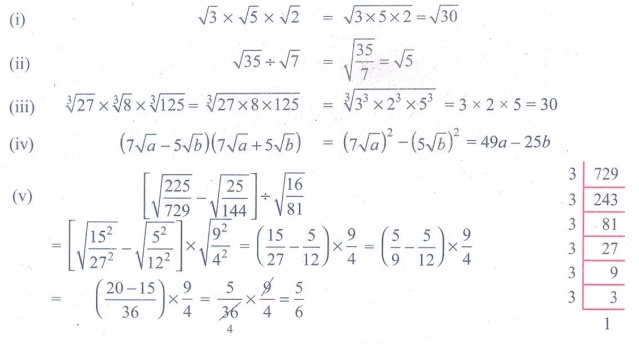Numerical Problems with Answers, Solution | Real Numbers | Maths - Exercise 2.6 : Surds | 9th Maths : UNIT 2 : Real Numbers
Chapter: 9th Maths : UNIT 2 : Real Numbers
Exercise 2.6 : Surds
Exercise 2.6
1. Simplify the following using addition
and subtraction properties of surds:
(i) 5√3
+18√3 −2√3 (ii) 4 3√5
+ 2 3√5 − 3 3√5
(iii) 3√75
+5√48 − √243 (iv) 5 3√40
+ 2 3√625 − 3 3√320

2. Simplify the following using multiplication
and division properties of surds:
(i) √3
× √5 × √2 (ii) √35 ÷ √7 (iii) 3√27 × 3√8 × 3√125 (iv) (7 √a -5√b)(7√a+5√b)
(v) [√(225/729) − √(25/144) ÷ √(16/81)

3. If √2 = 1. 414, √3 =
1. 732, √5 = 2. 236, √10 = 3.162 , then find the values of
the following correct to 3 places of decimals.
(i) √40-
√20 (ii) √300 + √90 − √8

4. Arrange surds in descending order
: (i) 3√5 , 9√4, 6√3 (ii) 2√3√5 , 3√4√7 , √√3

5. Can you get a pure surd when you find
(i) the sum of two surds (ii) the difference of
two surds
(iii) the product of two surds (iv) the
quotient of two surds
Justify each answer with an example.

6. Can you get a rational number when
you compute
(i) the sum of two surds (ii) the difference of
two surds
(iii) the product of two surds (iv) the quotient
of two surds
Justify each answer with an example.

Related Topics